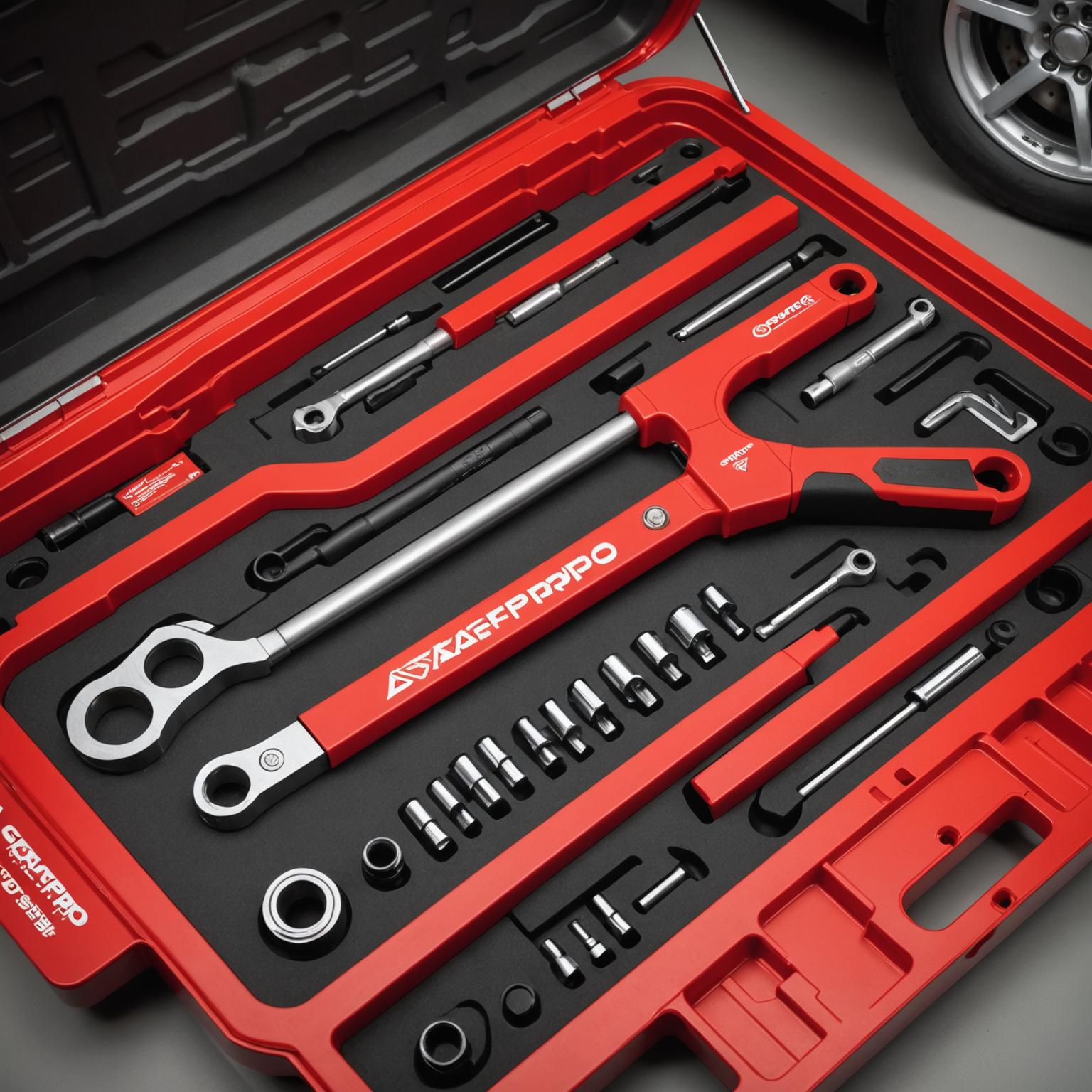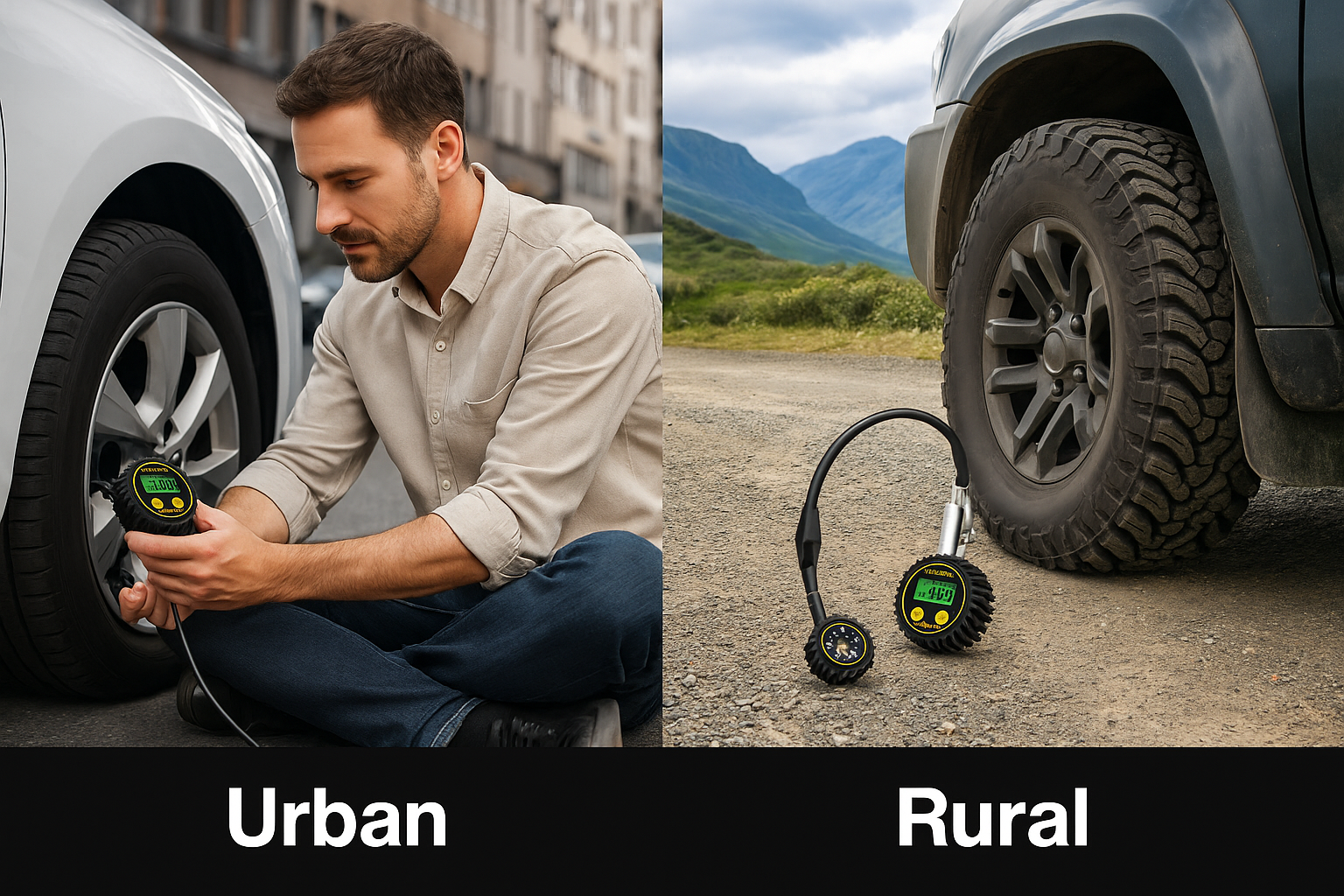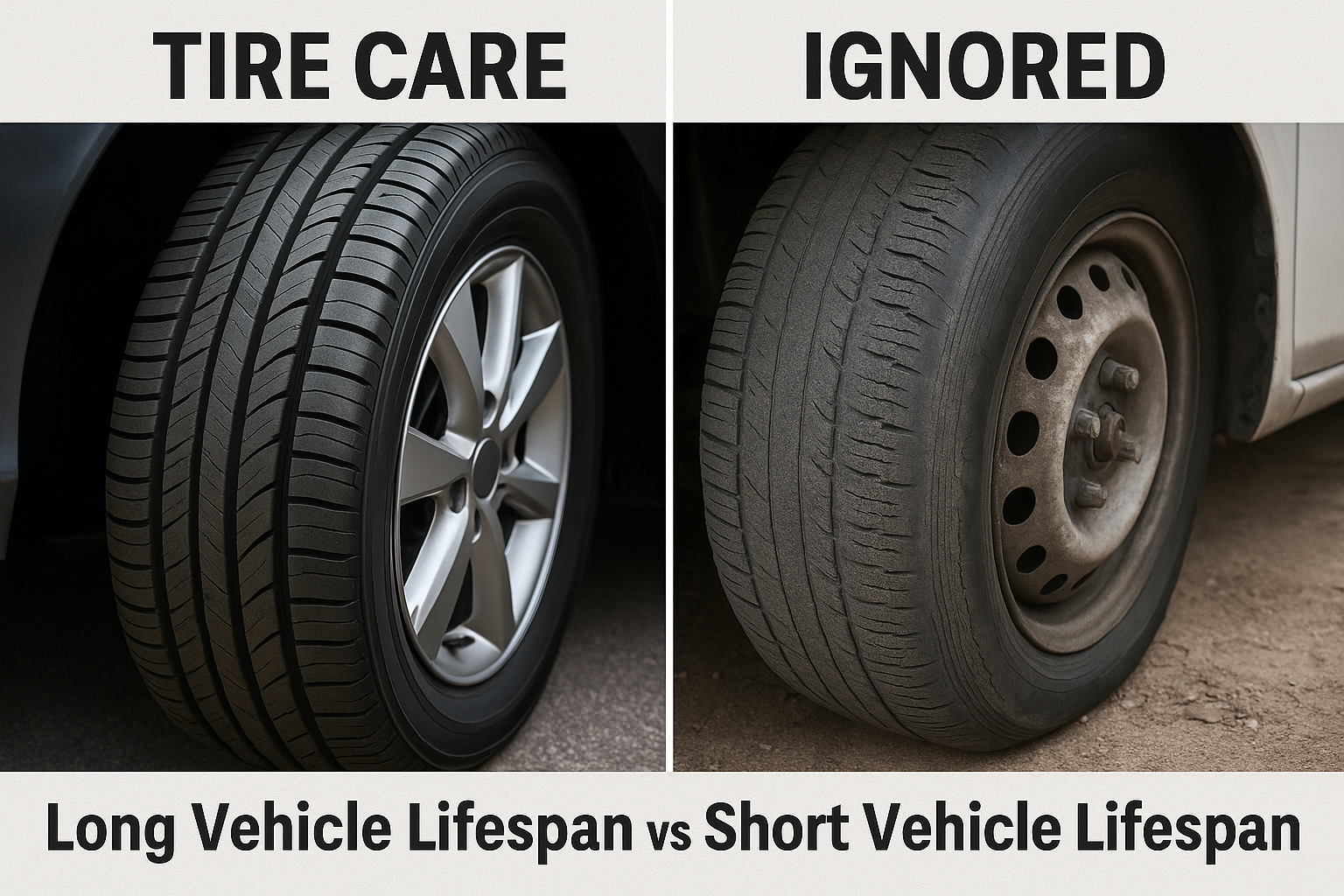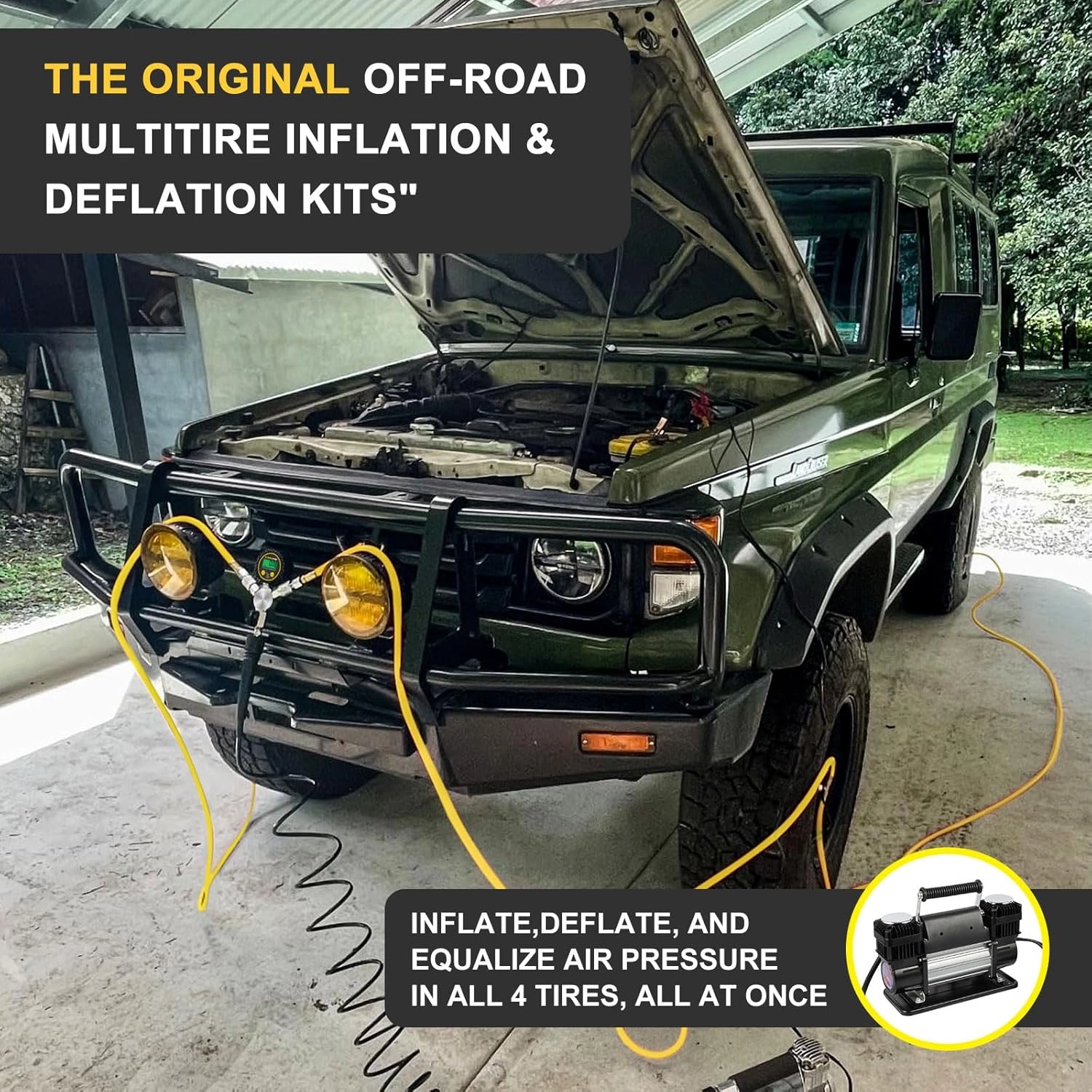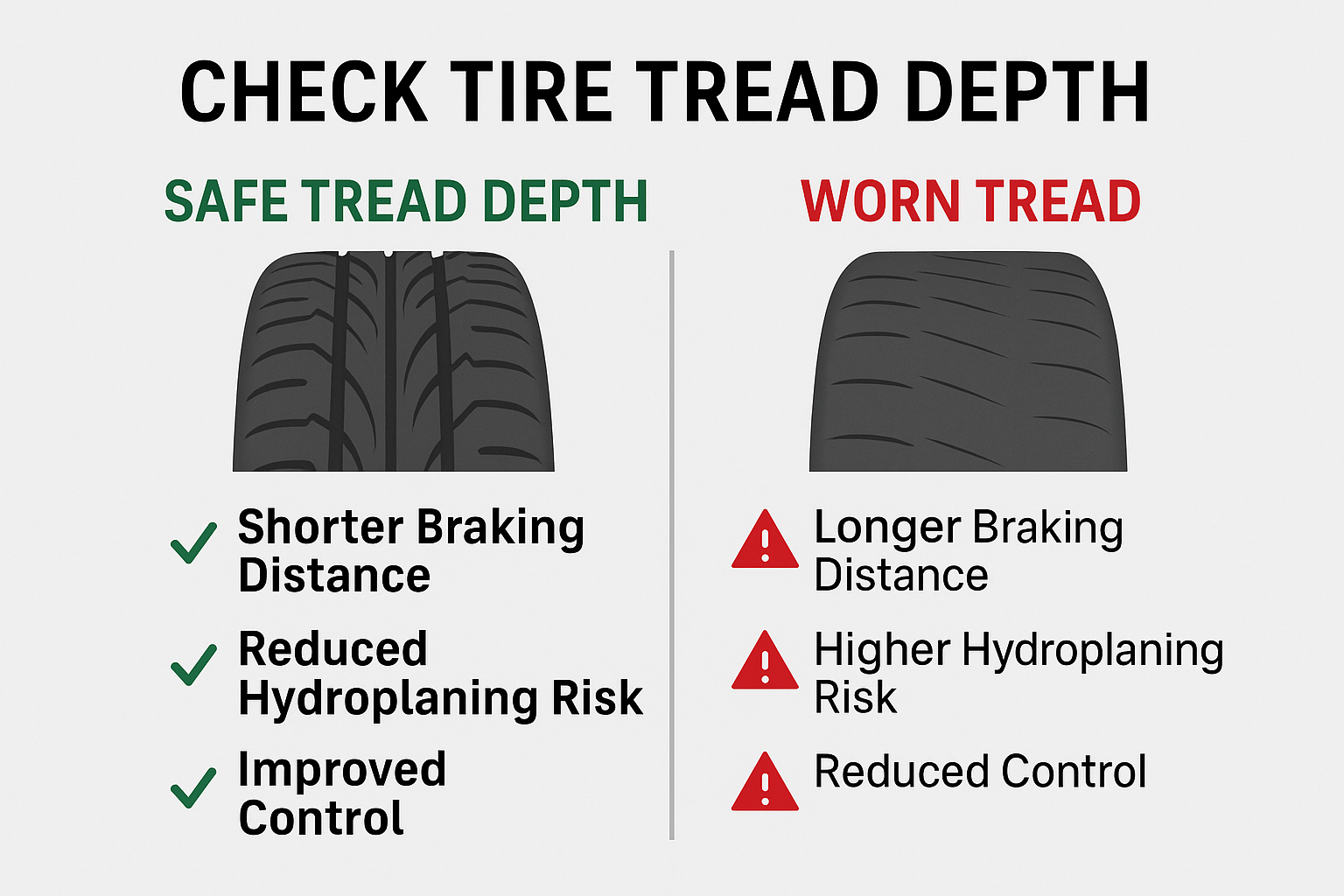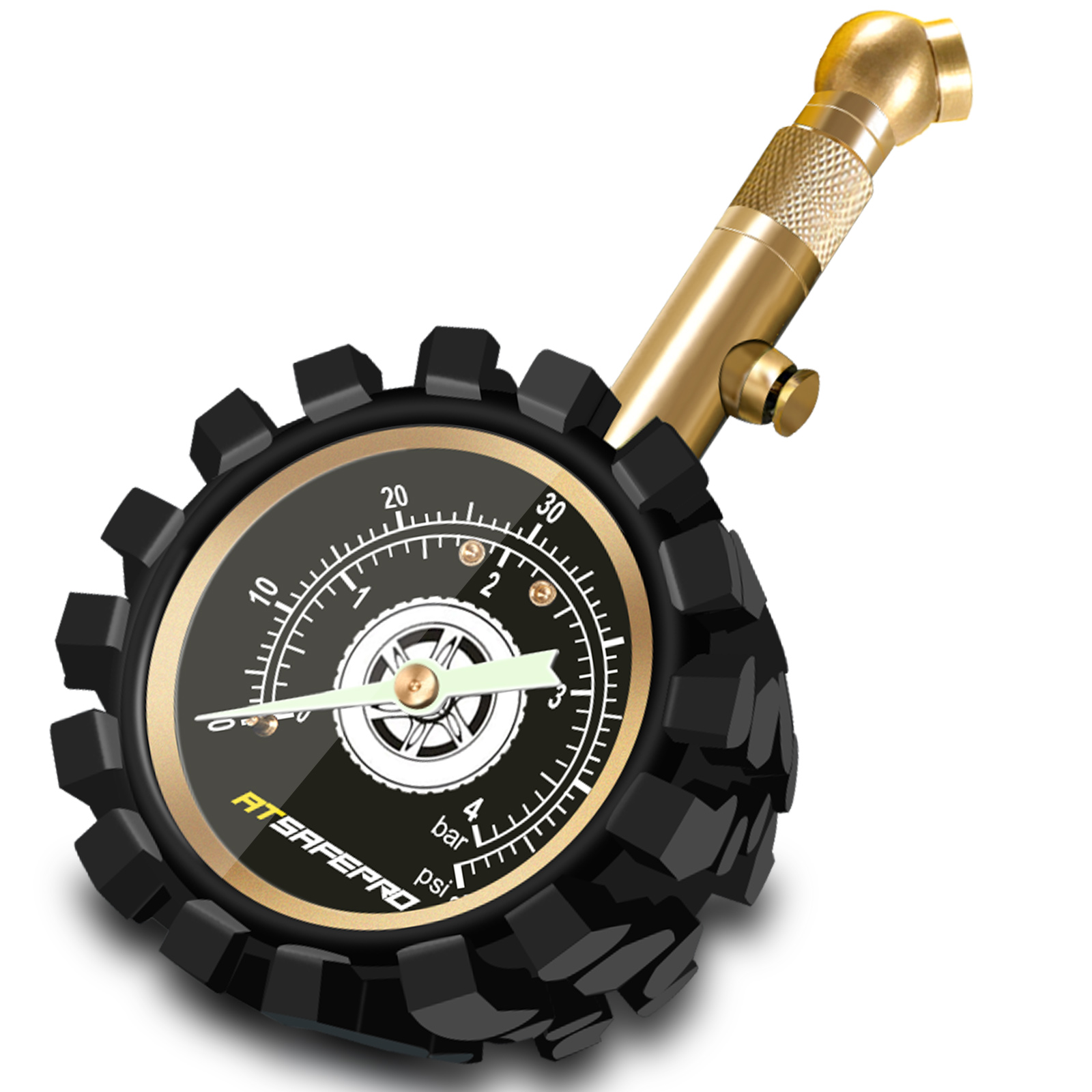
Digital vs Mechanical Tire Gauges: Which One Fits You Best?
How Tire Gauges Work and Why Accuracy Matters
A tire gauge measures air pressure inside a tire, usually expressed in PSI (pounds per square inch). Even a 2–3 PSI difference can affect fuel economy, braking distance, and tire wear. Studies show that underinflated tires account for over 600 accidents annually in the U.S. alone.
That’s why choosing the right tire pressure gauge matters. But should you go digital or mechanical? Let’s explore.
Digital Tire Gauges: Modern Convenience for Everyday Use
How They Work
Digital gauges use electronic pressure sensors and display results instantly on an LCD screen.
Advantages
-
High Precision: Often accurate to within ±1 PSI.
-
Easy to Read: Large backlit display, ideal for night or low-light conditions.
-
Compact and Portable: Fits easily in glove boxes or cycling kits.
-
Quick Results: No guesswork, numbers are displayed instantly.
Best For
-
Commuters who want quick, stress-free checks.
-
Families who share cars and need a user-friendly tool.
-
Cyclists who ride in varied conditions and require portability.
Mechanical Tire Gauges: Rugged Reliability for Professionals
How They Work
Mechanical gauges use a spring and needle dial (or bar in pencil gauges) to measure pressure.
Advantages
-
No Batteries: Works anytime, no electronics to fail.
-
Durable Build: Withstands drops, rough handling, and workshop use.
-
Long-Term Reliability: Stays consistent with proper calibration.
Best For
-
DIY car enthusiasts who maintain multiple vehicles.
-
Workshop mechanics needing rugged, daily-use tools.
-
Drivers who value a traditional, no-battery solution.
Choosing Based on Real-Life Needs
-
Daily Drivers → Digital gauge for convenience and quick results.
-
Road Trip Travelers → Digital gauge + portable inflator to ensure safety on highways.
-
Cyclists → Digital for accuracy and portability, pencil gauge as backup.
-
Garage Mechanics → Mechanical gauge for durability and long-term heavy use.
Side-by-Side Comparison
| Feature | Digital Tire Gauge | Mechanical Tire Gauge |
|---|---|---|
| Accuracy | ±1 PSI, consistent | ±2 PSI, may vary over time |
| Ease of Reading | LCD display, clear | Needle dial, requires focus |
| Durability | Sensitive to drops | Very durable, workshop-ready |
| Power Source | Battery required | None |
| Portability | Small, lightweight | Larger, less pocket-friendly |
| Best User | Commuters, cyclists | Mechanics, DIY hobbyists |
Accidents Prevented by the Right Tire Gauge
-
Highway Blowouts: Underinflated tires can overheat and explode at high speeds.
-
Poor Braking in Rain: Wrong pressure reduces tread contact, increasing hydroplaning risk.
-
Cycling Instability: Low pressure causes rim strikes and pinch flats, while overinflation reduces grip on curves.
-
Fuel Wastage: Driving with just 5 PSI too low can reduce gas mileage by 3–5%.
ATSAFEPRO: Helping You Make the Right Choice
Both digital and mechanical tire gauges have their place. What matters most is choosing the tool that fits your lifestyle. ATSAFEPRO offers a complete range — from compact digital gauges for cyclists to heavy-duty mechanical gauges for workshops — all built with accuracy and durability in mind.
Explore our products or contact us to find the tire gauge that matches your needs.



